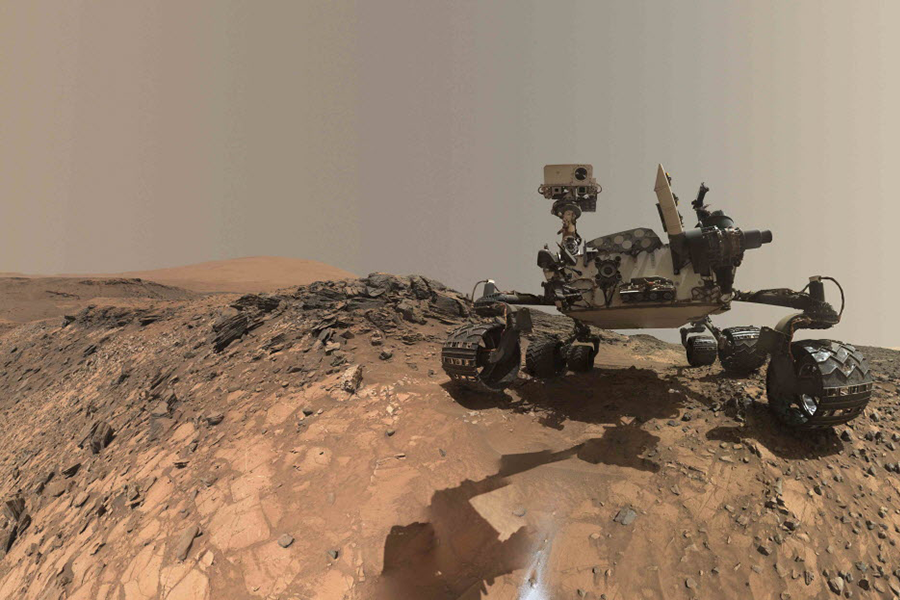Mystery solved: Mars rover Curiosity back to work
Loading...
Curiosity, NASA’s intrepid Martian rover, became fully operational again Monday, more than a week after retreating into a safe standby mode.
Like all spacecraft, whether exploring the cratered wilderness of Mars or pioneering pathways into the depths of space, Curiosity has built-in systems that take it into a safe mode if some kind of serious system failure threatens.
Engineers spent several days delving into the mystery of what had precipitated this partial shutdown, eventually coaxing the rover out of its standby mode on July 9th.
“The most likely cause of entry into safe mode has been determined to be a software mismatch in one mode of how image data are transferred on board,” reads a NASA statement. “Science activity planning for the rover is avoiding use of that mode, which involves writing images from some cameras’ memories into files on the rover’s main computer. Alternate means are available for handling and transmitting all image data.”
When Curiosity sunk into its safe mode last week, it ceased most activities other than maintaining its essential systems and following a preprogrammed sequence for resuming communications.
Sometimes, these shutdowns occur when cosmic radiation strikes sensitive electronics, but in this case the problem was internal, when Curiosity tried to save its captured images to its main computer and suffered a software mismatch. To counter this, NASA’s Jet Propulsion Laboratory, which manages the project, has devised a way to bypass the faulty software when images are being saved.
Curiosity has proved a hardy explorer. Three times before it has entered standby mode. It has experienced a broken arm, found itself stranded on a hill, suffered deep punctures in its wheels, and lost the ability to focus with one of its cameras.
Yet NASA’s scientists have managed to institute long-range fixes every time.
So successful has the robot proved to be, alongside its dedicated Earth-based team of controllers, that NASA approved a two-year extension to its mission earlier this month, taking Curiosity’s exploration of Mars into 2018 at least.
The mission began when the rover landed at Gale Crater in August 2012. Within the first year, its primary goal was achieved, determining that the region had once hosted fresh-water lakes and rivers, exhibiting environmental conditions that could, once, have supported microbial life.
Since then, the mission brief has focused on understanding how these wet, habitable conditions transformed into the dry, dusty surface that today constitutes the iconic images of the Martian landscape.
Indeed, Curiosity is also helping pave the way for a manned mission to Mars, and while NASA expects to undertake that giant step no sooner than 2030, it already has posters promoting the cause, seeking to appeal to aspiring astronauts.
“Hike the solar system's largest canyon, Valles Marineris on Mars,” reads one such offering, “where you can catch blue sunsets in the twilight, and see the two moons of Mars [Phobos and Deimos] in the night sky.”





